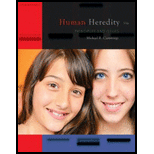
There have been recurring cases of mad-cow disease in the United Kingdom since the mid-1990s. Mad-cow disease is caused by a prion, an infectious particle that consists only of protein. In 1986, the media began reporting that cows all over England were dying from a mysterious disease. Initially, there was little interest in determining whether humans could be affected. For 10 years, the British government maintained that this unusual disease could not be transmitted to humans. However, in March 1996, the government did an about-face and announced that bovine spongiform encephalopathy (BSE), commonly known as mad-cow disease, can be transmitted to humans, where it is known as variant Creutzfeldt-Jakob disease (vCJD). As in cows, this disease eats away at the nervous system, destroying the brain and essentially turning it into a spongelike structure filled with holes. Victims experience dementia; confusion; loss of speech, sight, and hearing; convulsions; coma; and finally death. Prion diseases are always fatal, and there is no treatment. Precautionary measures taken in Britain to prevent this disease in humans may have begun too late. Many of the victims contracted it over a decade earlier, when the BSE epidemic began, and the incubation period is long (vCJD has an incubation period of 10 to 40 years).
A recent study concluded that 1 in 2,000 people in Great Britain carry the abnormally folded protein that causes vCJD. In spite of these numbers, the death rate from vCJD remains low. It is not clear whether this means that the incubation period for the disease is much longer than previously thought, or whether they may never develop the disease.
What measures have been taken to stop BSE?
Want to see the full answer?
Check out a sample textbook solution
Chapter 9 Solutions
Human Heredity: Principles and Issues (MindTap Course List)
- Describe the levels of structural hierarchy for the human body, starting with the organismal level and ending with the chemical level. In addition, you should make sure you link each level to the previous level, emphasizing the structural relationships.arrow_forward9 S es Read the section "Investigating Life: In (Extremely) Cold Blood." Then, drag and drop the terms on the left to complete the concept map. Red blood cells Genes Icefishes -have mutated have colorless Oxygen have few lack encode Blood Cellular respiration consists of- contain carries is a Platelets White blood cells carries low amounts of Hemoglobin is necessary for Plasma Protein Reset.arrow_forwardPlating 50 microliters of a sample diluted by a factor of 10-6 produced 91 colonies. What was the originalcell density (CFU/ml) in the sample?arrow_forward
- Every tutor here has got this wrong, don't copy off them.arrow_forwardSuppose that the population from question #1 (data is in table below) is experiencing inbreeding depression (F=.25) (and no longer experiencing natural selection). Calculate the new expected genotype frequencies (f) in this population after one round of inbreeding. Please round to 3 decimal places. Genotype Adh Adh Number of Flies 595 Adh Adh 310 Adhs Adhs 95 Total 1000 fladh Adh- flAdn Adh fAdhs Adharrow_forwardWhich of the following best describes why it is difficult to develop antiviral drugs? Explain why. A. antiviral drugs are very difficult to develop andhave no side effects B. viruses are difficult to target because they usethe host cell’s enzymes and ribosomes tometabolize and replicate C. viruses are too small to be targeted by drugs D. viral infections usually clear up on their ownwith no problemsarrow_forward
- This question has 3 parts (A, B, & C), and is under the subject of Nutrition. Thank you!arrow_forwardThey got this question wrong the 2 previous times I uploaded it here, please make sure it's correvct this time.arrow_forwardThis question has multiple parts (A, B & C), and under the subject of Nutrition. Thank you!arrow_forward
- Calculate the CFU/ml of a urine sample if 138 E. coli colonies were counted on a Nutrient Agar Plate when0.5 mls were plated on the NA plate from a 10-9 dilution tube. You must highlight and express your answerin scientific notatioarrow_forwardDon't copy off the other answer if there is anyarrow_forwardAnswerarrow_forward
 Human Heredity: Principles and Issues (MindTap Co...BiologyISBN:9781305251052Author:Michael CummingsPublisher:Cengage Learning
Human Heredity: Principles and Issues (MindTap Co...BiologyISBN:9781305251052Author:Michael CummingsPublisher:Cengage Learning Biology (MindTap Course List)BiologyISBN:9781337392938Author:Eldra Solomon, Charles Martin, Diana W. Martin, Linda R. BergPublisher:Cengage Learning
Biology (MindTap Course List)BiologyISBN:9781337392938Author:Eldra Solomon, Charles Martin, Diana W. Martin, Linda R. BergPublisher:Cengage Learning Biology Today and Tomorrow without Physiology (Mi...BiologyISBN:9781305117396Author:Cecie Starr, Christine Evers, Lisa StarrPublisher:Cengage Learning
Biology Today and Tomorrow without Physiology (Mi...BiologyISBN:9781305117396Author:Cecie Starr, Christine Evers, Lisa StarrPublisher:Cengage Learning
 Biology 2eBiologyISBN:9781947172517Author:Matthew Douglas, Jung Choi, Mary Ann ClarkPublisher:OpenStax
Biology 2eBiologyISBN:9781947172517Author:Matthew Douglas, Jung Choi, Mary Ann ClarkPublisher:OpenStax





